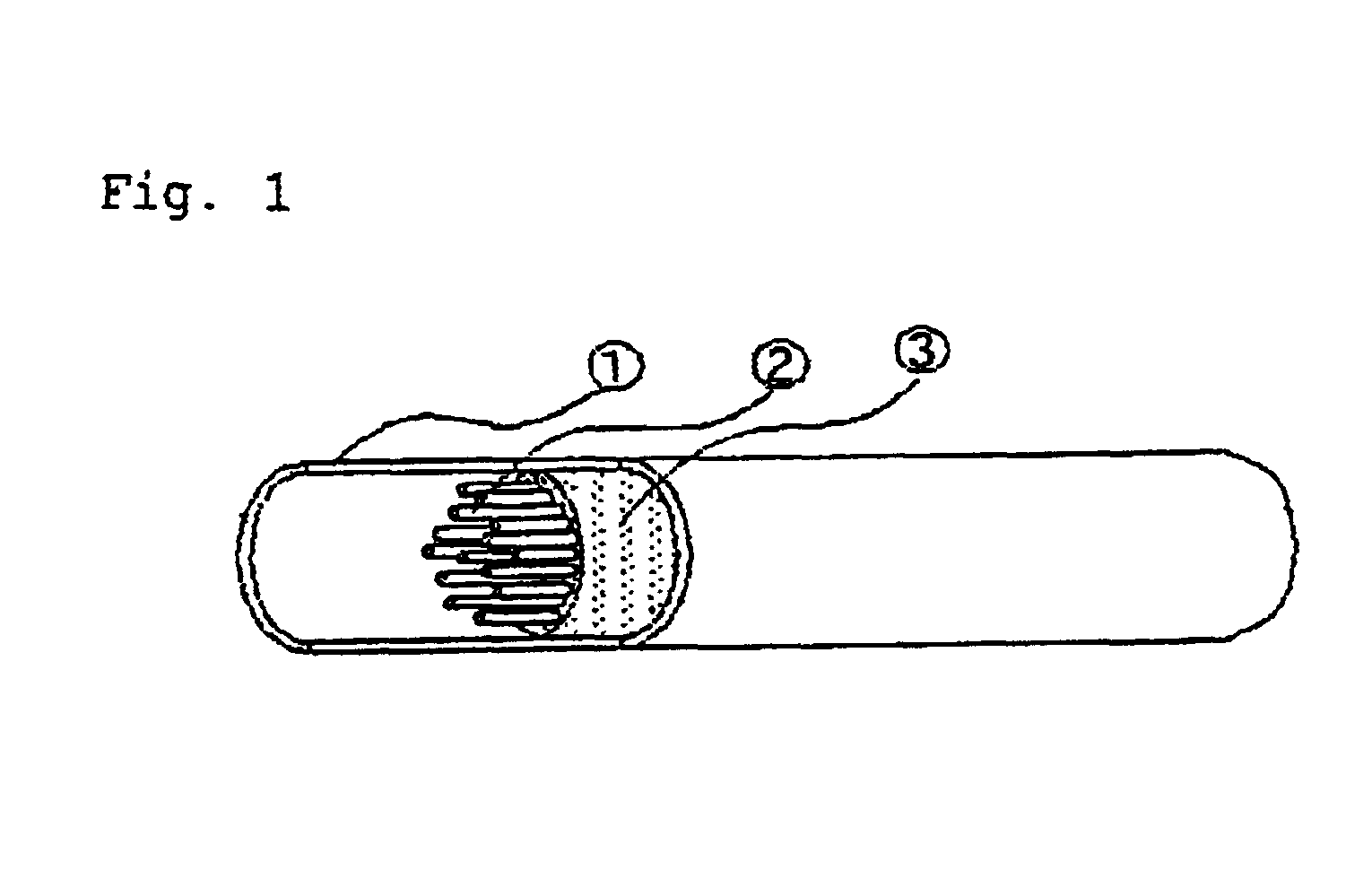Instrument for regenerating living organism tissue or organ
a living organism and organ technology, applied in the direction of prosthesis, ligaments, blood vessels, etc., can solve the problems of inability to recover by grafting the cut nerve, loss of skin sensation, etc., of the area from ankle to instep, etc., and achieve the effect of efficient growth
- Summary
- Abstract
- Description
- Claims
- Application Information
AI Technical Summary
Benefits of technology
Problems solved by technology
Method used
Image
Examples
example 1
Production of an Instrument for Regenerating a Living Organism Tissue or Organ
[0071]Enzyme-solubilized collagen (a mixture of collagen type I and type III) was dissolved in water to prepare an aqueous 5% solution and extruded in a coagulating liquid according to a conventional method to produce a collagen fiber having a diameter of 50 μm. The collagen fiber obtained was wound around a metal mandrel to produce a tubular structure constituted by the collagen and having an inner diameter of 1 mm and a thickness of 0.5 mm. In its lumen, 200 collagen fibers having a diameter of 50 μm were simultaneously inserted together with the aqueous 5% collagen solution and rapidly frozen and then lyophilization was performed in vacuo to produce a tubular instrument for regenerating a living organism tissue or organ entirely constituted by the collagen and of a structure such that it has a collagen fiber filling ratio of 50% in the lumen portion and a collagen-made porous material having a porosity ...
example 2
Tissue Regeneration Experiment on a Beagle
[0079]Using the regeneration instrument produced in Example 1, a tissue regeneration experiment on a beagle was conducted to confirm the regeneration of tissue under conditions close to that of humans. As for the tissue to be regenerated, a beagle peripheral nerve was selected.
[0080]The beagle fibular nerve was cut to make a 35 mm deficit portion. In this site the tubular collagen-made instrument for regenerating an organ mentioned above previously cut to 35 mm, i.e., the same length as the deficit portion length and subjected to 25-kGy γ-ray sterilization treatment was inserted and both ends thereof were sutured and fixed to the cut ends of the nerve with 8-0 polyamide based surgical suture at plural points.
Experimental Results
[0081]After the enthesis, an observation of nerve fiber regeneration was carried out by cutting out the tissue from the enthesis site at the time of the fifth week and performing an immunological tissue staining of pr...
PUM
| Property | Measurement | Unit |
|---|---|---|
| porosity | aaaaa | aaaaa |
| inner diameter | aaaaa | aaaaa |
| inner diameter | aaaaa | aaaaa |
Abstract
Description
Claims
Application Information
 Login to View More
Login to View More - R&D
- Intellectual Property
- Life Sciences
- Materials
- Tech Scout
- Unparalleled Data Quality
- Higher Quality Content
- 60% Fewer Hallucinations
Browse by: Latest US Patents, China's latest patents, Technical Efficacy Thesaurus, Application Domain, Technology Topic, Popular Technical Reports.
© 2025 PatSnap. All rights reserved.Legal|Privacy policy|Modern Slavery Act Transparency Statement|Sitemap|About US| Contact US: help@patsnap.com



